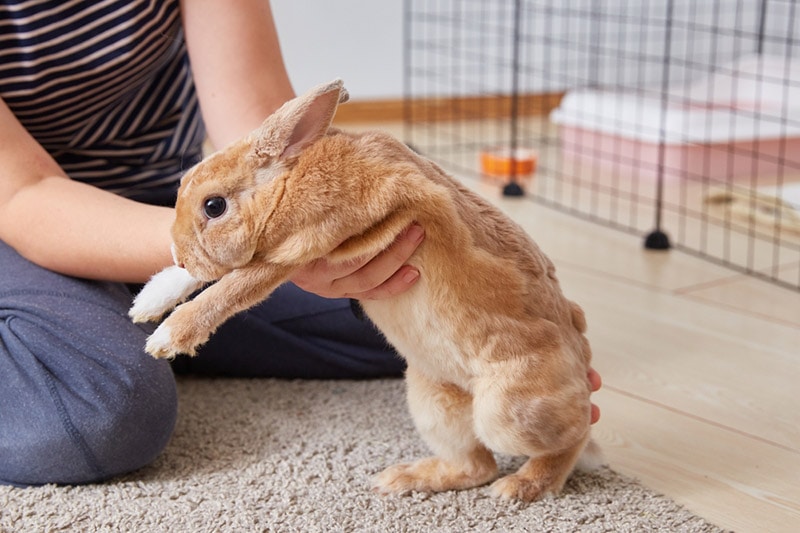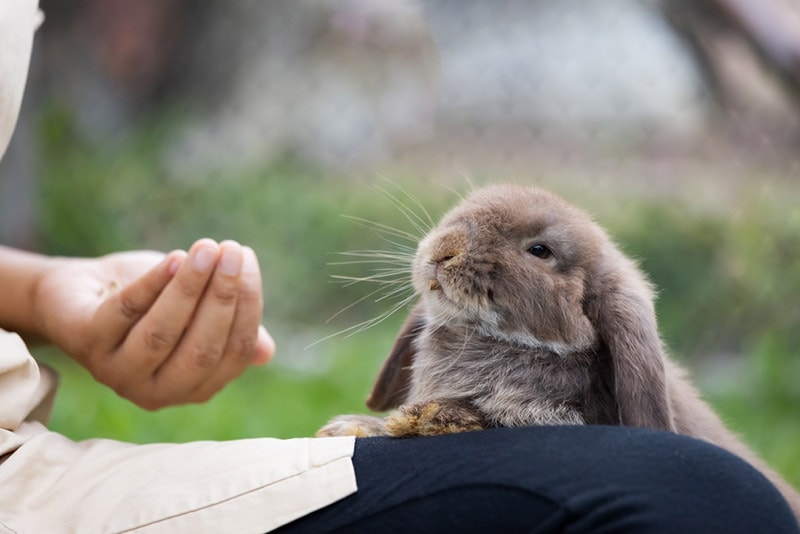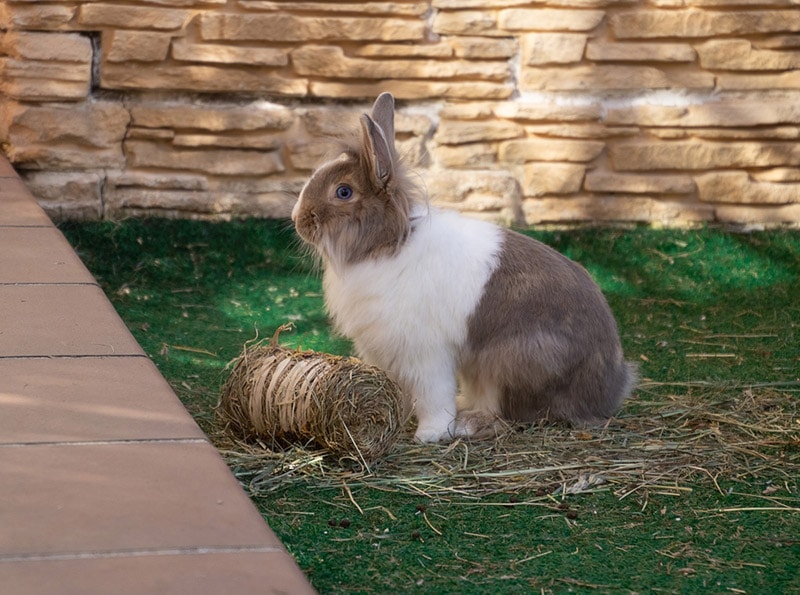How To Train a Rabbit: 6 Expert Tips & Tricks
By Beth Crane
Updated on

Rabbits are very intelligent animals. They bond deeply with their peers and owners and love to play with toys. Rabbits can be trained to perform tricks like fetch and present their feet when grooming! Most rabbits also learn how to use a litter tray very easily, so taking in our expert tips and tricks on training your rabbit can make your life easier and more fun.
The 6 Tips How To Train a Rabbit
1. Plan Your Goals
When you first set out to train your rabbit, you need to know what you expect them to do! It’s best to start training when your rabbit is comfortable with you so you’re both relaxed going into the training. Just like with dogs, setting out training goals can help you stay on track and keep the sessions manageable for you and your bunny.
Start with small goals, such as your rabbit learning their name or interacting with a toy you want them to fetch for you. If you quickly switch from learning one trick to another, it can confuse your rabbit and frustrate you both.
2. Find the Right Motivator
Most rabbits are motivated by food treats, and each will discover vegetables or fruit they’ll do anything for. Bananas are rabbit favorites but should only be given occasionally, so try a small slither of banana to see how your rabbit reacts!
Toys and games are also good motivators, particularly if your rabbit is interested in a ball or another easily fetched toy. Don’t withhold affection to be used as a motivator, as rabbits are social creatures who need positive interactions with their owners to bond with them. By finding a motivator your rabbit will work for, you can keep the training activity worthwhile no matter what trick you’re training for. Even rabbits who are more stubborn to litter train can have their interest piqued if their investigations of the litter box are rewarded with a tasty treat!

3. Understand Your Rabbit
Rabbits are prey animals, unlike other popular pets such as cats and dogs. They see, smell, and hear the world differently, and they have drives and instincts that can make training them and earning their trust more difficult if you do not understand it.
For example, rabbits have a blind spot directly in front of them due to their eyes’ position. They don’t like being approached from the front as they won’t be able to tell what’s coming towards them, and they can sometimes bite an unsuspecting owner’s finger, mistaking it for food! Fast movements, hands “swooping” overhead, and loud noises can all startle and frighten a rabbit; moving gently, slowly, and quietly can go a long way in giving your rabbit confidence and keeping training sessions enjoyable.
If your rabbit gets frightened, allow them to retreat into their safe space and calm down. You can continue training once your rabbit feels safe enough to come out and approach you again.
4. Be Patient and Positive
Some rabbits (just like some cats and dogs) will take longer to learn than others. Likewise, some rabbits will not be that interested in learning tricks or being still for nail clips; being patient and persevering is key! Try not to rush your training and keep it engaging. Keep sessions short and sweet, as rabbits have short attention spans and can often get distracted.
It’s also essential to never use negative training methods on your rabbit. You should never shout at your rabbit if they get a trick wrong or take too long since it will make them even more afraid of you and unlikely to perform the action you want. It’s crucial that you never hit your rabbit. Besides being cruel, it can easily break their bones or even cause a fatal injury.

5. Consistency Is Key
Being consistent with your commands and rewards is vital when training your rabbit. As mentioned, rabbits are often food-motivated and have short attention spans. Using the same commands each time if you’re using them and in the same tone can help your rabbit grasp the action you want them to perform, such as learning their name or associating a word (“spin!”) with the action (spin around in a circle).
If you mix phrases or change what you want your bunny to do suddenly, they’ll probably get the action wrong or get frustrated and refuse to perform it. Rabbits also take comfort in routine and structure; if you have a place your bunny is comfortable using for training, try to keep doing your sessions there. A rabbit that feels safe is a rabbit that will learn fastest, so being consistent and building a reliable routine can work wonders during training.
6. Have Fun!
Last but not least, have fun with your training. Whether you’re teaching your rabbit to give you a high five or to use their litter box, keeping training sessions light and positive will help you bond and make training rewarding for you both. Use positive reinforcement techniques and reward your rabbit each time they get a step right, as the more they look forward to training and treats, the easier it’ll be to train them!
Make sure to keep your bunny happy, letting them stop and take a break if they want to and paying attention to their body language. If you notice your rabbit getting stressed or fearful during any part of the training, stop and let them calm down.

Rabbit Training Techniques
The most popular (and arguably most effective) training methods are teaching your rabbit by positive association or clicker training. For positive reinforcement, you should have treats ready to reinforce the behavior you want to see. Because rabbits have a short attention span, having treats can help them make the connection between the behavior you want to see (such as jumping into the litter box) and a reward (such as a raspberry).
However, it’s also important to recognize when we might be reinforcing behavior we don’t want. For example, if your rabbit nibbles you to get you to move out of the way, and you do move, you’ve reinforced the action (nibbling) with the desired outcome (getting you to move).
Conclusion
Rabbits are intelligent and more than willing to learn neat tricks from their owners. Training can be a hugely rewarding experience for rabbits and their owners, as it provides an excellent bonding opportunity. Knowing how a rabbit perceives the world, being patient and consistent, and having lots of fun can make each training session enjoyable and successful!
Featured Image Credit: New Africa, Shutterstock











